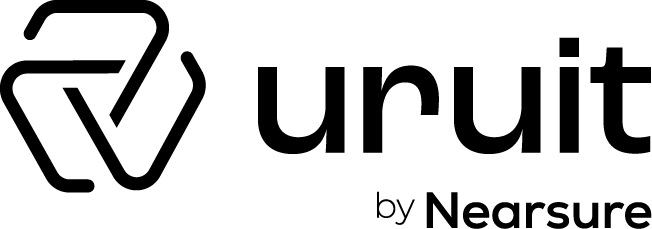Contents
Creating Effective User Personas & its need
A user persona is a brilliant tool to help you design and market your digital product. With the right approach, you’ll be able to better identify your target market and create meaningful connections with existing and prospective users. But what exactly is a user persona and how can you create one?
Here’s a primer on user personas: what they are, how they work, and what steps you need to follow to create a basic example.
What is a user persona?
A user persona is like a fictional character created to represent the different users that might interact with your product, or brand in a similar way. Designed through extensive research, these personas help you understand a users’ needs, behaviors, experiences, and goals.
Creating a persona essentially helps you step outside yourself. It helps you realize that different people have individual expectations and needs. It also helps you identify with the user you’re marketing to. It’s an empathy exercise and it will help you think the design, development, or growth of your digital product.
User personas make design tasks less complex by guiding your ideation processes. In essence, they help you achieve your goal of creating a great user experience for your target audience.
User personas are excellent tools for use in both product design and marketing. With them, you’ll be better able to target your products and campaigns to your ideal audience, ensuring your content is speaking to the right people.
Designers use user personas to great effect every day but they take time and effort to build. Today we’re going to do a deep dive into creating a practical user persona, and a user persona template that you’ll be able to use in the future.
Let’s get started.
Understand the need for a user persona
Building a user persona isn’t just for show, it has very real applications that can help you market yourself and your products more effectively.
An extensive understanding of your target market is fundamental when it comes to creating and marketing your products. User personas help your product team answer the most important question: Who are we designing for? Through developing an understanding of the concerns, motivations, and expectations of target users, you’re more likely to design a product that will meet a user’s needs and therefore be successful.
User personas also help your marketing team more effectively target your users. By building an understanding of your audience’s goals, you’ll be in a better position to market your products as a solution to those goals.
How does a user persona do all this?
A user persona helps you build empathy
Empathy is essential when it comes to building and marketing a product. User personas help designers and marketers develop understanding and empathy with your end-users.
Using user personas, designers and marketers can gain a perspective in line with the user. By creating a user persona, marketers and designers are better able to step outside their own experience, recognizing that different people have different expectations and needs. By delving into the needs of a fictional persona, marketers and designers will be able to better infer what a real person needs.
Designers and marketers are also able to use user personas to identify with the user they’re targeting. The more marketers and designers engage with a user persona, the more they’re likely to see them as real people. This, in turn, will encourage them to consider these users when designing and marketing products towards them.
User personas provide direction
Using user personas, designers are able to better shape product strategy while marketers are able to make more strategic marketing decisions. This allows designers and marketers to do things like prioritize feature requests or develop more effective content.
User personas also help designers and marketers avoid some common pitfalls, such as:
- Self-referential design and marketing. This happens when marketers and designers operate as if they’re targeting themselves, when the target audience may be quite different from them.
- Targeting elastic users. An elastic user is a generic user which may mean different things depending on the person. Targeting an elastic user happens when marketing and product decisions are made by different people who define the user at their own convenience.
User personas help communicate research findings
Most marketers and designers work in multidisciplinary teams. Those teams will have members with varying experience, points of view, and expertise. All your team members ought to be on the same page when it comes to decision-making. User personas embody the most essential information about users in a way that all stakeholders and team members can relate to and understand.
It’s all in the research
Rather than designing services, products, and solutions based on the preferences of an internal team, it’s become standard practice within a lot of design disciplines to collect research to personify different trends as personas.
Personas don’t describe real people, however, they are constructed using real data collected from real individuals. Personas, in essence, add a human understanding to what would otherwise remain cold, factual data.
In creating persona profiles, you’re putting yourself in a better position to understand patterns in your research. This will synthesize the type of people you’re seeking to create for.
At the end of the day, personas provide distinct and meaningful archetypes against which you can assess your products or services. Constructing a persona helps you ask the right questions and find answers based on your target market.
What should a user persona consist of?
The simplest user persona should answer three questions of its subject:
- Who are you?
- What’s your main goal?
- What’s your main barrier to reaching this goal?
You can have multiple personas all interested in the one product. This is because they may not use or experience that product the same way. Everyone is drawn to different things.
Let’s take a look at each of these questions a little more in-depth.
Who are you?
In answering this question you want specificity. Something like “I’m a B2B marketer who works for a startup agency”. The more information you have here, the better you’ll be able to narrow down their drive or interest in your product or service.
What’s your main goal?
The answer to this question will give you specifics on how your service or product will actually fit into your users’ life. Why are they purchasing or using it? What job are they servicing with it? What problem are they aiming to solve?
What’s your main barrier to reaching this goal?
Once you know who your audience is and what they’re trying to do, you need one more piece of the puzzle: what’s stopping them from buying or using your product?
How to create a persona
Creating a persona is relatively simple. The hard part is getting enough data on your target market to craft compelling personas.
Here are the steps to creating a persona:
1. Collect data
Collect as much data about your current and prospective customers as you can. This might mean collecting information via quizzes or surveys. You can also look at online metrics like social media follower data. Asking existing customers to complete a short customer satisfaction questionnaire is a great way to collect valid data for this step.
However to choose to collect your user data, just ensure it’s vetted and accurate. There’s no use buying users (a bad plan unto itself) and then trusting the information that came with the list.
2. Analyze the data
Once you have user data you need to put it through its paces by analyzing it. See if you can answer the above three questions with the data you have. Are there any particular goals that stand out as similar among users? Do they have any demographic information in common?
When analyzing the data, don’t just concentrate on demographic information. This won’t serve your purposes well. There’s little use in knowing who your audience is if you don’t also know what’s stopping them from using or buying your product or service.
Once you have the data analyzed you should have a solid breakdown of who your major audience is. You should also know some of their main goals and the barriers that are preventing them from reaching them.
3. Build your persona
With the information you’ve gathered and the trends you’ve identified, you should be able to now build your persona.
Split a table into three and put each of the essential questions as headers of that table. Using your analyzed data, put answers to those questions below the headers. Say you’re selling CRM software. Your table might look something like this:
- Who are you?
A B2C marketer of a startup agency - What’s your main goal?
To improve my email marketing to my customers - What’s your main barrier to reaching this goal?
I don’t know how to segment my contact lists
And that’s it! Give your new persona a name and you’ll be able to use it to better market your digital product going forward.
Note: start small
The example above is the bare bones of a workable persona. This is great for when you’re just starting out and want to create your first one. From there you can expand and get more complicated with your questions and qualifiers.
Just don’t bite off more than you can chew when you’re first starting out. Keep things simple and straightforward and your marketing and design efforts will thank you. It’s best to do this at the beginning of creating your digital product, but it will be of great help at any point of your digital product lifecycle.
Make use of user personas today
User personas are a great way to lock down your target market. With the right research, killer analytics, and through answering the right questions you’ll be on your way to designing and marketing your products and services in a more meaningful and effective way.
Building user personas can be tricky, but it’s not impossible. With our downloadable guide, you’ll be able to create effective user personas that will enable your design and marketing teams to better target your ideal market.



